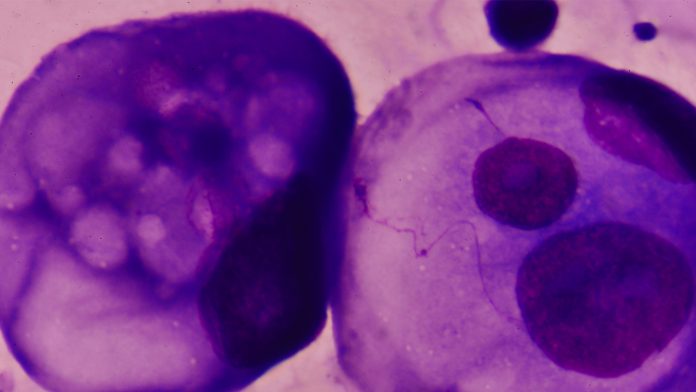
A team of Brazilian researchers have developed a strategy that could cut off cancer cells from two major food sources – could this be a new form of triple negative breast cancer treatment?
Triple-negative breast cancer, or TNBC, makes up approximately 15% to 20% of all breast cancers and is most common in African American women. These tumours lack estrogenic and progesterone receptors and HER2 protein which are present in other breast cancers and permit certain targeted therapies. And because every TNBC tumour has a different genetic makeup, finding new markers that could guide triple negative breast cancer treatment has been a difficult task.
The road to triple negative breast cancer treatment
“There is intense interest in finding new medications that can treat this kind of breast cancer,” said Sandra Martha Gomes Dias, a cancer researcher at the Brazilian Biosciences National Laboratory in Campinas. “TNBC is considered to be more aggressive and have a poorer prognosis than other types of breast cancer, mainly because there are fewer targeted medicines that treat TNBC.”
In a new study in the Journal of Biological Chemistry, Dias and colleagues demonstrate that in addition to glutamine, a well-known cancer food source, TNBC cells can use fatty acids to grow and survive. When inhibitors that block both glutamine and fatty acid metabolism were used in concert, TNBC growth and migration slowed.
Cancer cells consume at an increased rate
To maintain their ability to grow at a breakneck pace, cancer cells consume nutrients at an increased rate. Glutamine, which is the most abundant amino acid in plasma is one of them.
According to the researchers, some types of cancer become heavily reliant on this versatile molecule as it offers energy, carbon, nitrogen, and antioxidant properties, all of which support tumour growth and survival.
The drug Telaglenastat, also known as CB-839, prevents the processing of glutamine and is currently in clinical trials to treat TNBC and other tumour types. CB-839 works by deactivating the enzyme glutaminase, preventing cancer cells from breaking down and reaping the benefits of glutamine. However, recent research has shown that some TNBC cells can resist the drug treatment.
Details of the study
To see if alterations in gene expression could explain how these cells survive, the authors of the study exposed TNBC cells to CB-839, defined those that were resistant and those that were sensitive to the drug, and sequenced their RNA.
According to the researchers, in the resistant cells, molecular pathways related to the processing of lipids were highly altered. In particular, levels of the enzymes CPT1 and CPT2, which are critical for fatty acid metabolism, were increased.
“CPT1 and 2 acts as gateways for the entrance of fatty acids into mitochondria, where they will be used as fuel for energy production,” Dias said. “Our hypothesis was that closing this gateway by inhibiting CPT1 in combination with glutaminase inhibition would decrease growth and migration of CB-839-resistant TNBC cells.”
The double inhibition proved significant as it slowed proliferation and migration in resistant TNBC cells more than individual inhibition of either CPT1 or glutaminase.
Dias concludes that these results provide new genetic markers that could better guide drug choice in patients with the condition, moreover, improving triple negative breast cancer treatment.







